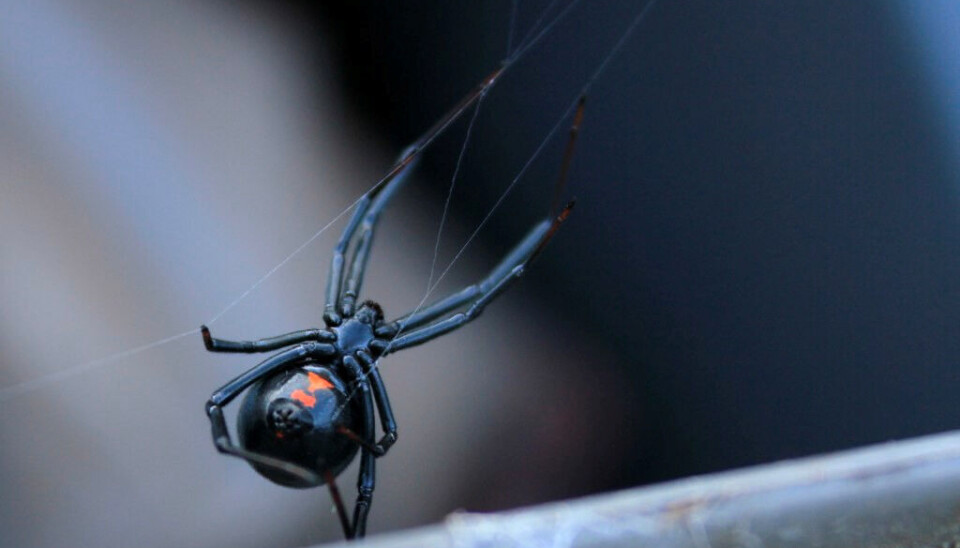Researchers' Zone:

New climate, new habitats: The tiny tingling mobilization that slowly takes new territory
Global warming and urbanization has sent spiders on the move – including the venomous ones. Are we aware of and prepared for the risks?
July 2023 is the hottest month ever recorded on Earth, with a global average temperature of 16.95°C.
Maybe you seek inside for some shadow or stand in the doorway to catch a rare breeze when the heat hits, or maybe you enjoy the increasingly common hot summer days.
No need to travel south when the south comes to the north, right? And you are not alone.
Some animals loves the hot weather too. But what do they do, when it is not only one exceptional hot summer day, but a global change in temperatures?
Climate change impacts wildlife adaptation
These awesome beach summer days hide the shadow of the climate change.
Climate change comes together with extreme meteorological phenomena that unfortunately happen more often.
It is a global hurdle, and a result of the massive changes in climate and our way of living in a modern fast living globalized world with a very slow decarbonization and high dependence of fossil fuels.
We are aware about the high cost associated with agricultural losses, as some crops do not do well in extreme temperatures, or heavy rain, or long dry spells.
However, do we know what wild animals do to adapt?
Adapting or Dying: How Wild Animals Cope with Climate Change
Wild animals are extremely dependent on environmental conditions meaning water and food resources, temperature, and predators.
Some birds are already adapting their shape to reduce water loss and survive high temperatures. Others are moving to other geographical regions that match their preferred climate conditions.
We might be happy to welcome tropical fishes in the Baltic Sea someday, but there are other not-so-friendly animals crawling to survive in our territory.
Climate Change Sparks Invasive Species Migration
We will have to get used to share our territories with other species than usual.
A notorious example of dangerous animal species migrating due to climate change during the last decade is the black widow spiders (Latrodectus spp.).
However, northern latitudes are slowly reaching such higher average temperatures, making it possible for black widow spiders to colonize new territories.
The redback widow spider (L. hasselti) and the brown widow spider (L. geometricus) are endemic from Australia and the US, and they are declared invasive species in Japan, where both species can be found in Japans southwestern area.
The northern black widow (L. variolus) used to live in the US, but now thrives in Canada.
The Dangerous Bite of Black Widow Spiders
Black widow spiders are known for being some of the most venomous spiders on earth, where it is only females who bite to their own defense.
The venom contains a particular toxin only found in widow spiders called alpha-Latrotoxin (a-LTX). Upon venom injection, a-LTX binds to neurons causing the massive release of neurotransmitters, leading to intense pain and paralysis of the victim.
The collection of symptoms, which is caused by the venomous black widow spider bite, is known as latrodectism.
Even though a bite from a black widow spider is seldom deadly, it can cause complications in elder people, children, and pets.

The Challenge of Producing Black Widow Antivenom
The present treatment of latrodectism consists of the administration of black widow antivenom.
The antivenom is obtained from a horse that has been injected with small doses of black widow spider venom until the horse’s immune system builds up antibodies that can neutralize the venom components.
Unfortunately, the availability of black widow antivenom is very limited.
The main bottleneck is obtaining the venom to immunize the horse; to obtain 1 gram of venom it is necessary to milk approximately 50,000-100,000 spiders.
The solution could be human antibody-based antivenoms
Spider outbreaks are becoming more frequent, as seen in recent years, such as when the 2021 floods in Australia forced ground-dwelling sheetweb spiders to find drier environments
In 2022, when the colorful Asiatic Joro spiders expanded throughout the Atlanta region from Southeast Asia.
If an outbreak of black widow spiders occurred, and the region of the outbreak did not have any stock of antivenom, then the slow production process would cause huge trouble, since it is not possible to supply antivenom fast.
Furthermore, the antivenom can cause serum sickness, allergy due to the non-human nature of the product.
Next generation antivenoms based on human antibodies discovered and produced in the laboratory, could be the future solution for black widow spider outbreaks.
Urbanization boosts spider population, including venomous black widows
Due to the low availability of antivenom, it is important to consider the increasing population of spiders in urban cities, including the spread of the black widow spider.
The genus/specie (?)has been estimated to thrive more in densely populated areas than in nature, as factors that increase the risk of spider bites.
According to Professor Chad Johnson, an expert in evolution and behavioral ecology from Arizona State University, he can find around 5.000 spiders in the city if he spends the same amount of time searching as he would in the desert, where he would only find 3 spiders.
The amount of easily accessible food, buildings that could serve well to build a spider home and fewer enemies are some of the factors that make spiders thrive in the cities.
The spread of the black widow spider to highly populated urban cities will increase the chances for getting bitten.
Research in genetics of the black widow spider species point towards that these urban spiders that seem to thrive in a big metropolitan area as Phoenix in Arizona may have been transported there by mistake.
This is because there is a remarkable difference in the genomics to their respective black widow cousins in the Sonoran Desert, close to Phoenix.
Venomous Spiders are Thriving and Expanding in Urban Areas
As we have shown, spiders (also the venomous ones) do both migrate and thrive in cities.
Climate changes could be to blame for at least the migration, but it is also assumed that our globalized and urbanized world seem to cause the expansion of several species to areas that have not been occupied by them before.
The spread of the noble false widow spider (Steatoda nobilis) started a century ago.
At that time the distribution of other species did probably not have much to do with the climate changes we know today, simply the way we as humans got more globalized.
The false widow spider got transported to Ireland from islands of Portugal or Spain by humans.
Since they still thrives in Ireland, they must have found the climate favorable when they arrived.
Today’s climate changes do not seem to affect them in a negative way, rather they thrive by still living and expanding their populations in Ireland.
Living peacefully with black widow spiders
The tiny tingling mobilization of the black widow spider seems on the contrary to be helped by the man-made climate change, because of the gradual increase in temperatures that are enabling them to expand their territories to new regions.
Though, it could also be affected by the way we as a humankind have colonized the world and live globally.
As Homo sapiens, most of us probably do not think much of the species that could take advantage of our lifestyle if it can benefit their survival.
The distribution of black widows will become a threat to more people, just as we are a threat towards their survival and our shared planet.
Hopefully, with more knowledge about the presence of black widow spiders and how to seek medical help if we are bitten, we as humans can live peacefully side-by-side…and the spiders could possibly help us deal with some of the mosquitoes.




